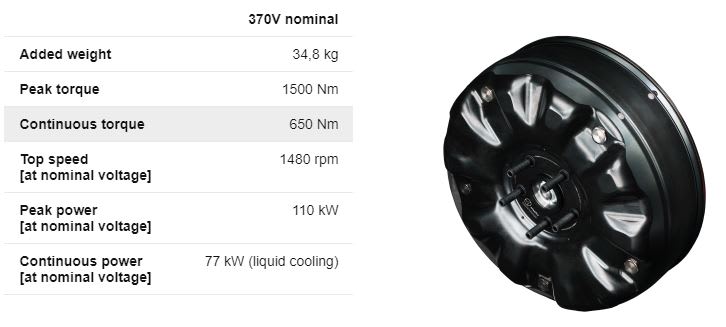The torque numbers with an electric motor are almost irrelevant because it depends on the design operating speed of the motor, which could be anything ... and you can compensate for that with gearing.
What you cannot compensate for with gearing, is if you simply don't have enough power to get the task at hand done. So, you need to look at the horsepower numbers first, and the target vehicle top speed and maximum rated motor RPM to work out what the gear ratio needs to be, THEN look at the motor torque rating and the gear reduction to work out if acceleration from a standstill and hill-climbing at low speed will be acceptable (and if not, you will need a multi-speed transmission). Part of why Tesla and other EVs seem overpowered is simply that in the interest of not needing a multi-speed transmission, they need a certain torque rating to have acceleration from a standstill and they need a certain motor operating speed (in combination with appropriate single-ratio gear reduction) to get the target top speed. Combine those, and it's a big horsepower rating.
I believe most of the old-VW electric conversions retain the rear-mounted VW 4-speed manual transmission and differential, which is rather handy if the motor that you plan to use is a smidge underpowered (or, under-torque-rated, if you will).
Now ...
That Sprinter, presumably extended length high roof, probably weighs 3000 kg on its own. Add another 1000 kg of permanently installed motorhome camper conversion stuff plus cargo plus something for your batteries, which are going to weigh something.
Climbing the above-mentioned 8% grade at (let's say) 25 metres per second (about 90 km/h or 55 mph if you prefer) will require 4000 kg x 9.807 x 0.08 x 25 = 78 kW JUST to get up the slope. That doesn't count aero drag (and it's a big vehicle), nor frictional losses in the tires, brakes, driveline, and what-not.
Mercedes' power rating for their Sprinter EV therefore make sense given that this vehicle is meant to be used in urban delivery applications ... not cross country road trips (you won't get very far on a charge).
The old VW buses were sllllloooooo
The chassis and suspension and tires on the old VW buses probably means it's just as well that they were that slow.

